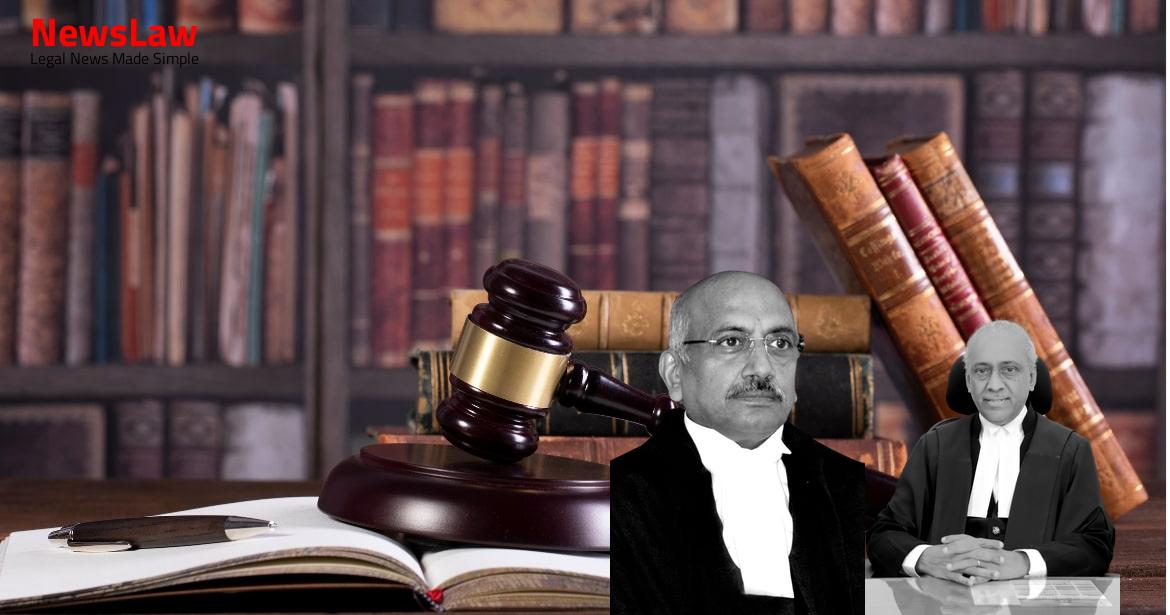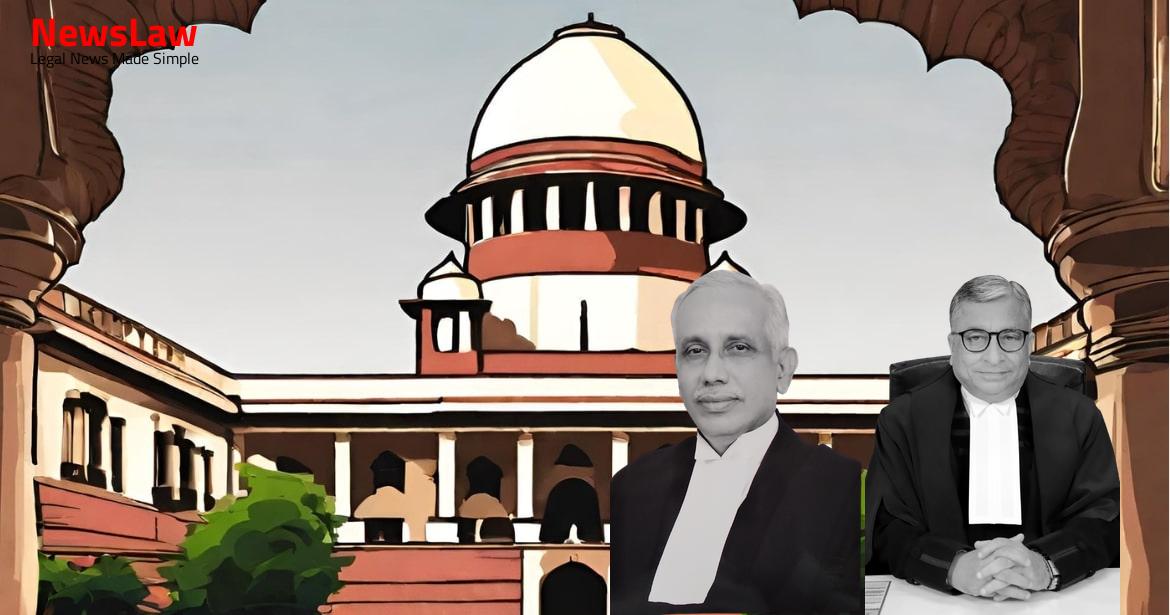Delve into the thorough legal examination conducted by the court regarding cadre allocation in civil service recruitment, shedding light on the statutory rules, consultation processes, and precedents cited in the case. This summary provides insight into the complexities of cadre allocation decisions and the legal implications involved.
Facts
- The Union of India filed an additional affidavit on 31.10.2018 pointing out that cadre strength was divided between cadres based on the number of districts in each State.
- Rule 5(1) of the Indian Administrative Service (Cadre) Rules, 1954 requires consultation with the State Government regarding cadre allocation.
- The High Court misinterpreted the statutory rules and cadre allocation policy.
- Cadres/joint cadres were divided into four groups, and 24 States were arranged alphabetically.
- There was no SC/ST candidate, so the OBC candidate, the applicant, filled the vacancy.
- The Commission could not recruit 85 officers in CSE-2002 due to the lack of candidates.
- Kerala requested more officers than allocated, revealing a discrepancy in vacancy distribution.
- Requisition for 108 posts was made by States, but only 89 were available for allotment.
- It was decided to recruit 70 officers in CSE-2002 and spread the remaining vacancies over four years.
- The applicant was successful and allocated Himachal Pradesh cadre after the State Government’s consent was received.
- The applicant filed an Original Application in the Central Administrative Tribunal, leading to further legal proceedings including writ petitions in the High Court.
- The Tribunal directed the Union to accommodate the applicant in the Maharashtra cadre based on merit.
- The High Court allowed the applicant’s petition regarding cadre allocation.
- The allocation circular in force during 2007 was considered for cadre allocation.
- Principles of allocation based on a roster system were followed.
- A procedure for cadre allotment was prescribed by the Union on 30.07.1984.
- The Union appealed against the direction to allocate the respondent to the Kerala cadre.
- An OBC candidate was allocated the first vacancy to the Maharashtra cadre due to the grouping of cadres.
- Rule 7(4) allows for SC/ST or OBC candidates to be appointed to reserved vacancies with regard to efficiency.
- The applicant was assigned to the Himachal Pradesh cadre as a general merit candidate.
- The High Court erred in considering the applicant as a general category candidate when she had not availed any concessions meant for OBC candidates.
- The consultation process for the allocation of the applicant to Himachal Pradesh was deemed complete.
- Consultation under Rule 5(1) of the Cadre Rules was conducted with the State of Himachal Pradesh where the applicant was allocated.
Also Read: Interpretation of Will and Hindu Succession Act: Legal Analysis
Arguments
- Mere vacancy in the cadre or State does not confer any legal right for the State to demand additional officers.
- Judgment Union of India v. Satya Prakash and Ors. about OBC candidates selected on merit does not apply in this case.
- Consultation was not carried out with the State of Kerala for allocation of the applicant.
- Decision to fill 89 vacancies was an administrative one based on various factors, including infrastructure availability for training.
- Need for OBC status is only at the time of cadre allocation.
- Argument that the applicant should be allocated to Maharashtra Cadre due to being an outsider candidate is presented.
- Consultation for cadre allocation is to be done with the State to which the candidate is being allocated.
- Civil Appeal No 47/2004 upheld the decision against allocation to one state over others in the country.
- State of Kerala did not dispute the allocation decision of 89 vacancies till 2007.
- Officers could not be allocated to Kerala against the policy decision of filling up 89 vacancies.
- References are made to judgments like The State of Haryana v. Subhash Chander Marwaha and Shankarsan Dash v. Union of India.
Also Read: Analysis of High Court’s Decision on Registration Certificate and Onus of Proof in Sales Tax Case
Analysis
- Rules and advertisement published prior to the judgment of the Court not consistent with the law in Indra Sawhney case.
- Applications for CSE-2006 invited as per Recruitment Rules and allocation circular.
- Provisions in notification regarding recommendation of SC/ST or OBC candidates against reserved vacancies.
- SC/ST or OBC candidates selected against unreserved vacancies have the option to be adjusted against reserved vacancies for a higher service choice.
- Procedure for allocation of cadre is mechanical and does not allow exceptions except as per Rule 7(4).
- Candidates, including the applicant, were notified of cadre allocation process.
- Cadre allocation is not a right but an incidence of service.
- Consultation with State of Kerala not necessary for cadre allocation.
- Candidate’s merit list appearance does not guarantee appointment.
- High Court’s conclusions on vacancies and allocation not supported by evidence.
- Candidates recommended against unreserved vacancies may be adjusted to reserved vacancies based on preference for maintaining administrative efficiency.
- Applicant rightly treated as a general category candidate as she had not availed OBC concessions.
- Jurisdiction for filing applications before the Tribunal based on posted location.
- OBC candidate allocated to Maharashtra cadre as per rules.
- Regulations must align with statutory rules.
- Consultation for allocation not with the State where officer is allocated but with the State where officer claims allocation.
- In the case of Alchemist Ltd. v. State Bank of Sikkim, it was established that even a small fraction of the cause of action occurring within the court’s jurisdiction gives the court territorial jurisdiction to entertain the suit or petition.
- The Full Bench of the Jurisdictional High Court in the case of Nakul Deo Singh v. Deputy Commandant clarified that the existence of vacancies does not automatically grant a candidate the legal right to be selected for appointment.
- In Oil and Natural Gas Commission v. Utpal Kumar Basu & Ors., it was determined that filing a writ petition in a specific court due to potential loss suffered at the petitioner’s registered office within that court’s jurisdiction is permissible and valid under Article 226(2) of the Constitution.
- The applicant is not being non-suited on the ground of jurisdiction of the Ernakulam Bench.
- The judgement does not dismiss the application based on lack of jurisdiction.
- This particular issue is not a basis for rejecting the applicant’s case.
Also Read: Legal Analysis of Domestic Inquiry and Misconduct in Employment Case
Decision
- The appeals have been allowed
- Orders passed by the High Court and the Tribunal are set aside
- The original application filed by the applicant is dismissed
Case Title: UNION OF INDIA SECRETARY TO GOVERNMENT Vs. A. SHAINAMOL IAS (2021 INSC 661)
Case Number: C.A. No.-011480-011481 / 2018



